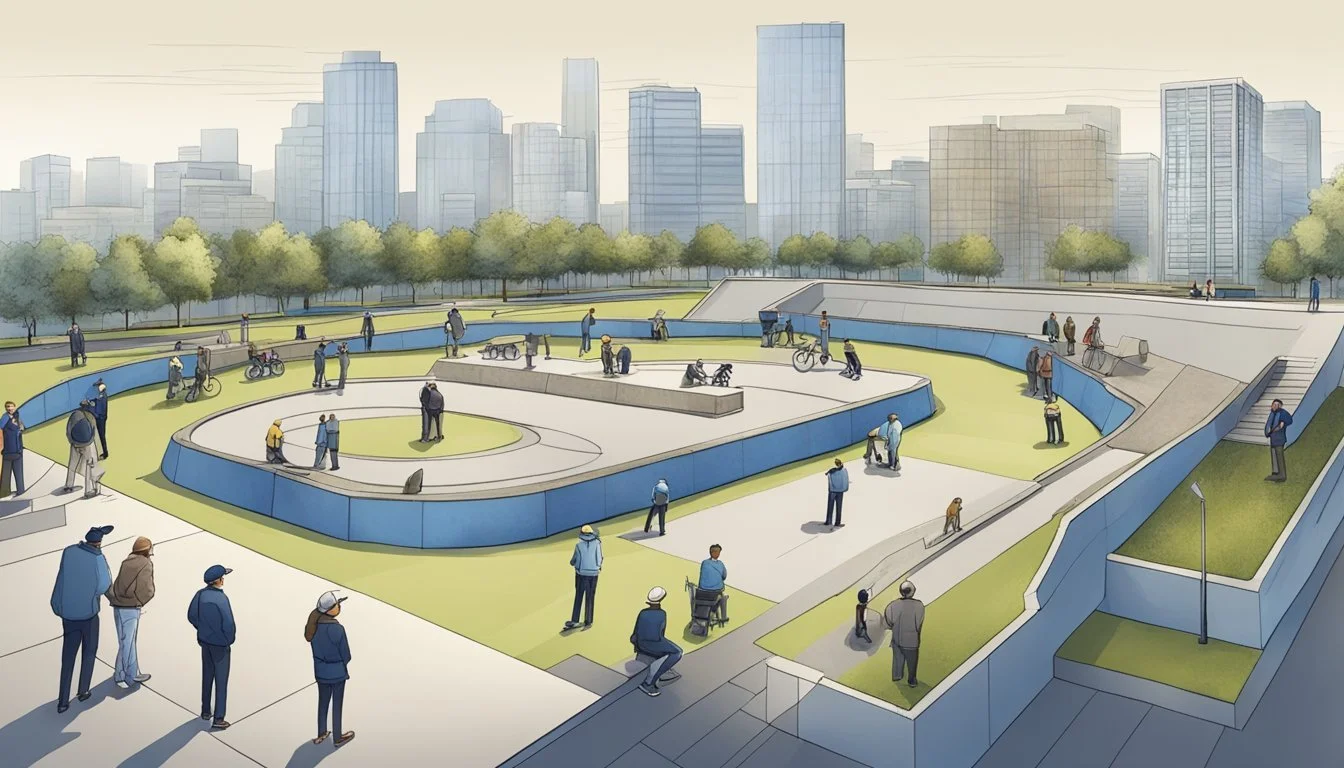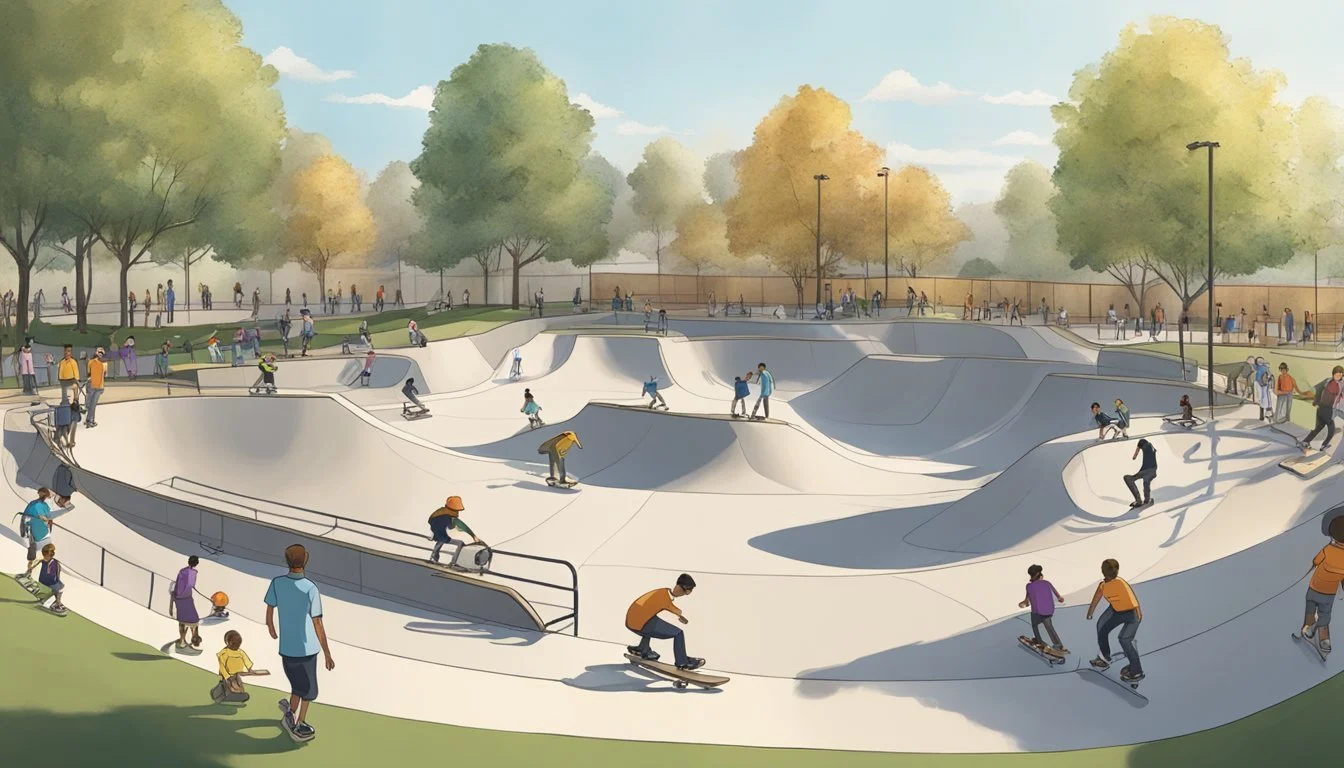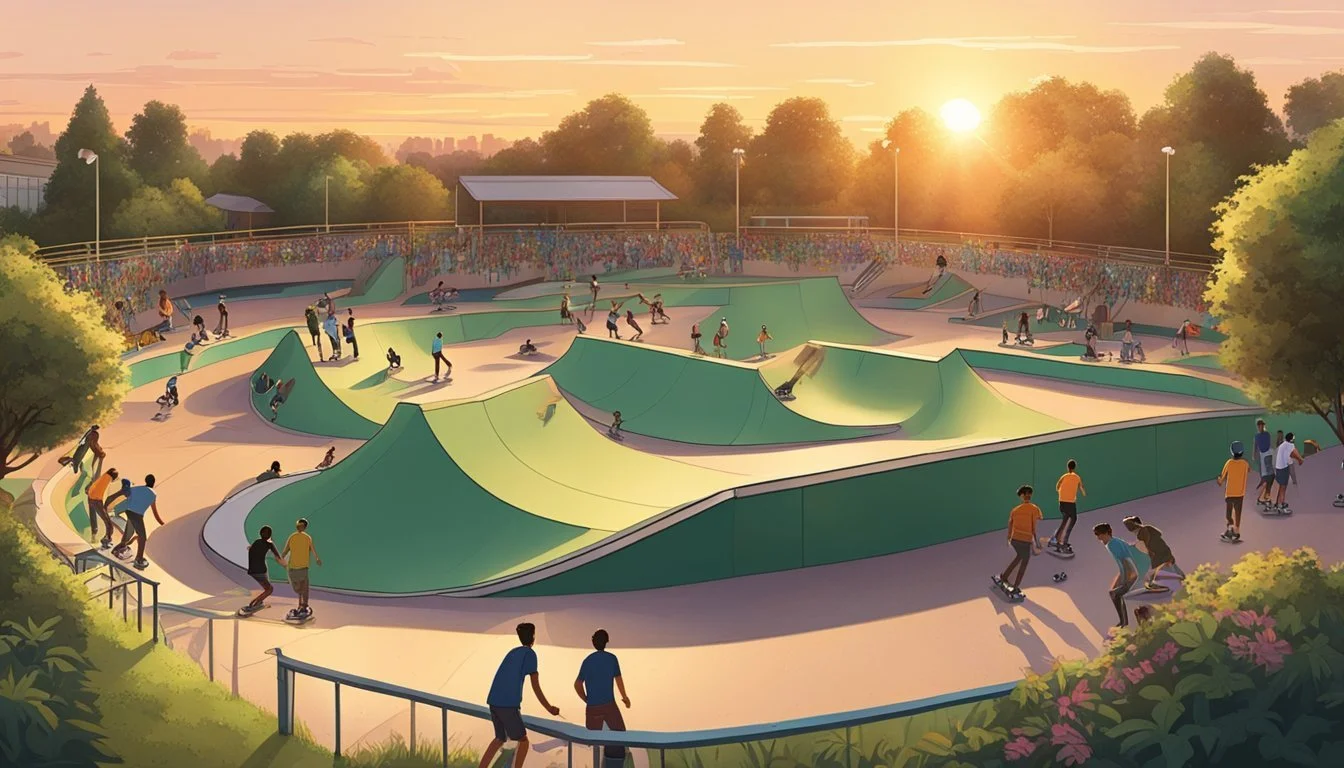Free Land for Skate Parks
Enhancing Community Spaces for Youth
Providing free land for skate parks can be a transformative move for communities looking to foster active lifestyles and provide safe spaces for youth. By allocating land for these facilities, municipalities have the opportunity to promote physical fitness, creativity, and social interaction among young people. This initiative not only offers a productive outlet for energy but also encourages a healthier, more engaged community.
The success of skate parks relies heavily on community support and thoughtful planning. Organizations like The Skatepark Project and Skate Free illustrate the impact of dedicated spaces for skateboarding, providing training, equipment, and technical assistance to ensure high-quality facilities. Partnerships with foundations like the Ralph C. Wilson, Jr. Foundation further bolster these efforts, offering substantial grants to build and maintain these parks.
Skate parks serve as modern-day gathering spots where youth can build confidence and learn valuable life skills. Cities that support skateboarding see benefits in youth engagement and community health, as these parks become hubs of activity and learning. When free land is allocated for such projects, the potential positive outcomes for both individuals and the broader community are significant.
The Benefits of Public Skateparks
Public skateparks offer numerous advantages to youth and communities alike. They promote physical health, create safe and inclusive community spaces, and foster youth engagement in sports.
Promoting Healthy Active Lifestyles
Public skateparks encourage youth to adopt healthy, active lifestyles. Skateboarding helps build endurance, strength, and coordination. Skateparks provide a dedicated environment for regular physical activity, reducing the likelihood of sedentary habits. This, in turn, combats issues like obesity and mental health problems, leading to improved overall well-being.
Additionally, the skills developed through skateboarding often encourage participants to engage in other sports and physical activities, further supporting an active lifestyle.
Creating Safe and Inclusive Communities
Skateparks serve as havens for youth of diverse backgrounds, promoting social inclusion. Unlike many traditional sports facilities, skateparks are typically free to use, eliminating economic barriers that may prevent participation. This inclusive nature helps bring together young people from various socioeconomic, cultural, and ethnic backgrounds.
By providing a designated space for skateboarding, skateparks also reduce the incidence of skateboarding in potentially dangerous or inappropriate public areas, improving safety in the broader community.
Advancing Youth Engagement in Sport
Skateparks play a critical role in engaging youth in sports activities. Many young people find traditional sports unappealing or inaccessible. Skateboarding offers an alternative that appeals to those who might not participate in team sports. It fosters creativity, resilience, and persistence as skaters work on mastering new tricks and techniques.
Furthermore, skateparks often become vibrant community hubs, where mentorship and peer support flourish. Experienced skaters frequently help newcomers, fostering a sense of community and belonging. Community events and competitions organized at skateparks provide additional opportunities for youth engagement, encouraging a lifelong love for sports and physical activity.
Planning and Advocacy for Skateparks
Effective planning and advocacy are crucial for the successful establishment of skateparks. This includes assessing the need for such facilities, garnering community support, and collaborating with local officials and organizations.
Assessment of Need and Demand
Identifying the necessity for a skatepark is a fundamental first step. Conduct surveys and gather data from local skaters, BMX riders, and residents. Collect signatures on petitions to demonstrate substantial community interest.
Highlight the benefits of skateparks, such as providing a safe environment for skating and reducing juvenile delinquency. Engage with schools and youth organizations to understand their needs and support for a skatepark facility, ensuring it meets the specific needs of the community.
Community Involvement and Support
Engaging the community is essential for the success of any skatepark project. Host community meetings to solicit input and build public enthusiasm. Encourage local skaters, parents, and other stakeholders to participate in advocacy efforts.
Leverage social media and other platforms to raise awareness and generate backing for the project. Build alliances with community groups and nonprofits that share an interest in youth recreation and public space development, such as The Skatepark Project.
Working With Local Officials and Organizations
Collaboration with city officials and organizations is key to navigate the various stages of skatepark development. Present a well-researched plan that outlines the benefits and logistical requirements of the skatepark. Emphasize safety, accessibility, and the potential for community enrichment.
Work closely with municipal planning departments and public works to secure necessary permits and funding. Establish clear, ongoing communication with local government representatives and maintain a professional demeanor to gain their support and trust in the project.
By effectively planning and advocating, communities can create skateparks that serve as valuable resources and vibrant hubs for youth activities.
Financial Considerations for Skatepark Projects
When planning a skatepark project, securing funding is essential. This section details various financial sources, such as grants, tax-exempt statuses, and donations, to ensure the success of these community-driven projects.
Exploring Grants and Funding Opportunities
Grants are a pivotal resource for skatepark projects. Organizations like The Skatepark Project offer skatepark grants to help fund facilities, especially in underserved communities. To apply, communities often need to meet specific criteria and demonstrate community support. Besides The Skatepark Project, other entities such as local government programs and private foundations might offer grants specifically for community recreation projects.
Key considerations:
Research potential grant programs early in the planning process.
Prepare a comprehensive application detailing the project's impact.
Maintain accurate records of how funds will be utilized.
Understanding Tax-Exempt Status and Public Charity
Obtaining a tax-exempt status can significantly aid a skatepark project. As a public charity, a skatepark organization can apply for 501(c)(3) status, exempting it from federal income tax. This status can also enhance the appeal to potential donors and grantmakers, providing reassurance about the charitable nature and fiscal responsibility of the organization.
Steps to apply:
Form a non-profit organization.
Apply for tax-exempt status with the IRS using Form 1023.
Ensure compliance with state and federal regulations.
Benefits:
Increased eligibility for skatepark grants and donations.
Tax-deductible contributions for donors.
Donations, Sponsorships, and Other Forms of Support
Securing donations and sponsorships is another effective strategy. Local businesses, corporate sponsors, and individual donors can significantly contribute to the financial requirements. Community fundraising events can also garner local support and raise funds. Offering naming rights or including sponsor logos in the park design can incentivize larger contributions.
Strategies include:
Hosting events such as skateboard competitions or community fairs.
Engaging with local businesses for sponsorship opportunities.
Utilizing online fundraising platforms for widespread reach.
Producing value for sponsors and donors:
Acknowledging contributions publicly.
Providing regular updates on the project's progress.
By leveraging these financial avenues, communities can gather the necessary resources to build and sustain vibrant skateparks.
Design and Construction of Skateparks
Properly designing and constructing a skatepark involves multiple key factors, including the choice of location, collaboration with experienced contractors, and incorporating diverse features to cater to skaters of all skill levels.
Choosing the Right Location
Selecting an appropriate location for a skatepark is crucial for its success. It should be easily accessible to the target community, preferably within walking or biking distance for young people. Proximity to public transportation and safe pedestrian routes enhances usability.
Several amenities nearby, such as restrooms, water fountains, and seating areas, increase the comfort for users. The area should also be spacious enough to accommodate various skatepark features while leaving room for spectators and future expansions.
Additionally, considering the environmental impact and the potential noise level helps in maintaining a harmonious relationship with the surrounding community. Local zoning laws and land use regulations must also be reviewed to prevent legal obstacles during construction.
Collaborating with Professional Contractors
Partnering with professional contractors who specialize in skatepark projects ensures that the design is both functional and safe. These experts bring technical assistance that helps in translating conceptual designs into durable structures. Professional contractors are knowledgeable about the specialized materials and construction techniques required for a skatepark.
A clearly defined project timeline and budget are essential. The contractors should provide detailed plans and schedules, keeping the stakeholders informed about progress and any potential delays or issues. Regular communication and site inspections help in maintaining quality control throughout the construction phase.
Hiring contractors with a proven track record in skateparks can significantly reduce risks associated with construction flaws and safety hazards. It is also important to involve the local skating community in the planning stages to ensure their needs and preferences are met.
Incorporating Features for Skaters of All Levels
A successful skatepark should cater to skaters of various skill levels, from beginners to advanced practitioners. This can be achieved by incorporating diverse elements such as:
Street elements: stairs, ledges, rails, and curbs mimic urban environments.
Transition elements: bowls, half-pipes, and vert ramps provide curved surfaces for advanced tricks.
Safety features must be integrated to protect users. Smooth transitions between surfaces, proper drainage systems, and adequate lighting can mitigate the risk of injuries and enhance the overall experience.
It's also beneficial to include learning zones for beginners where they can practice basic skills without interference from more advanced skaters. Offering a balanced mix of elements ensures that the park remains engaging and challenging for all users.
Operational Aspects of Running a Public Skatepark
Managing a public skatepark involves several critical operational aspects including maintenance, safety policies, and balancing costs with accessibility to ensure a safe and enjoyable environment for all users.
Maintenance and Security Considerations
Maintaining a public skatepark requires regular inspections and upkeep to prevent deterioration and ensure safety. Scheduled tasks include checking ramps and rails for damage, graffiti removal, and trash collection.
Security is also crucial. Proper lighting, especially security lighting, can deter vandalism and ensure the park is safe after dark. Surveillance cameras and regular patrols by security personnel can further enhance safety measures.
Adequate seating and shade structures contribute to the overall comfort and usability of the park, making it a welcoming space for skaters and observers alike.
Setting Policies for Use and Safety
Clear policies are essential for the safe operation of a skatepark. This includes rules around helmet use, permitted hours, and behavior expectations. Posting these rules prominently helps ensure compliance and educate new users.
Waivers often play a role in managing liability. Users or their guardians should sign waivers to acknowledge the risks involved. This practice is common when public property is used for potentially hazardous activities.
Enforcing these policies consistently is vital. Trained staff or volunteers should be available to monitor the park and address any breaches of the rules promptly.
Balancing Free Access with Operational Costs
While free access to the skatepark can encourage participation, it’s important to balance this with the costs of operation. Funding can come from a combination of sources such as municipal budgets, grants, and donations.
Some parks introduce small usage fees or offer memberships to help cover ongoing expenses. Offering special programs or events can also attract sponsorships and partnerships that offset operational costs.
Transparency about how funds are used can build community support. It’s beneficial to involve local businesses and residents in fundraising efforts, showcasing the skatepark as a vital community resource.
Case Studies and Success Stories
Free land for skate parks has enabled many successful initiatives to flourish, blending community involvement and youth engagement. These projects reflect both local and international efforts to create vibrant public spaces for skating.
Local and International Skatepark Projects
The Skatepark Project (TSP), founded by Tony Hawk, has helped underserved communities in various regions. For instance, the Brooklyn Skate Garden in New York City transformed an underutilized space into a community hub for local skaters.
Brower Park and Mount Prospect Park are other notable examples where public land has been revitalized through skate parks, providing safe areas for skating enthusiasts.
On an international level, Skateistan operates in countries like Afghanistan, enabling youth to engage in both skateboarding and education.
Community Transformation Through Active Engagement
Active community engagement plays a crucial role in the success of skate parks. TSP supports projects that gain backing from local skaters, parents, and leaders.
For example, a skate park in Subiaco observed increased community participation, becoming a central location for gatherings and events.
In many cases, the presence of a skatepark has helped reshape public perceptions of skaters, emphasizing their positive contributions to community life and safety.
Impacts on Youth Development and Public Spaces
Research highlights that skate parks have a significant impact on youth development. The Pullias Center for Higher Education found that skateboarding improves mental health and fosters resilience among young people.
Skateistan's educational programs merge skateboarding with learning, providing holistic development for children in affected regions.
Public spaces also benefit, as evidenced by the transformation of sites in Brower Park and Mount Prospect Park. These skate parks have not only provided recreational areas but also contributed to the beautification and utilization of otherwise neglected public spaces.
Advancing the Skatepark Movement
The skatepark movement thrives on grassroots engagement, support from nonprofit organizations, and alignment with national and international programs.
Building Grassroots Commitment and Capacity
Grassroots commitment is the foundation of the skatepark movement. Advocates organize local skateboarding events, workshops, and community meetings to gather support. These initiatives build capacity by involving local stakeholders from skaters to city officials. Volunteers often lead these efforts, demonstrating a strong commitment to creating public spaces for youth.
Investment in youth leadership programs also enhances capacity. By training young leaders, communities ensure sustained advocacy and innovation in skatepark design and use. Collaborative efforts across neighborhoods lead to the successful establishment of skate parks in urban and rural areas.
Leveraging Support from Non-Profit Organizations
Nonprofit organizations play a pivotal role in advancing the skatepark movement. Organizations like The Skatepark Project (TSP) facilitate funding, design expertise, and advocacy resources. TSP collaborates with local communities across the 50 states, providing grants and technical assistance.
These organizations offer critical resources, including professional consultations and construction advice, to ensure that skateparks meet safety and inclusivity standards. Nonprofits also help mobilize public and private partnerships, bringing together various stakeholders to support skatepark initiatives.
Engaging with National and International Programs
Engagement with national and international programs magnifies the impact of the skatepark movement. Programs under the National Recreation and Park Association (NRPA) provide frameworks for local governments to incorporate skate parks into urban planning. Advocacy at the national level ensures policies support the development and maintenance of these public spaces.
Internationally, initiatives facilitated by global organizations promote skateboarding as part of cultural and youth engagement programs. These programs share best practices and innovative designs, ensuring that skate parks benefit from a global pool of knowledge and experience. Engaging with these entities helps local skatepark advocates stay informed about trends and funding opportunities.
Future Perspectives of Urban Skateparks
Urban skateparks are becoming essential elements in fostering active lifestyles among youth. With significant investments and innovative designs, they hold the potential to transform urban environments while promoting community engagement.
The Evolving Landscape of Skatepark Facilities
Municipalities are increasingly recognizing the value of skateparks. Cities like New York are partnering with organizations such as The Skatepark Project, investing millions into creating new facilities. These skateparks are not just recreational spaces; they serve as community hubs where young people can gather, socialize, and participate in active lifestyles.
The trend towards integrating other activities, such as parkour and bouldering, within skateparks is growing. This helps to meet diverse interests and encourages wider community usage of the space.
Emerging Trends and Innovations in Skatepark Design
Modern skatepark design is moving beyond traditional ramps and rails. Innovations include multi-use spaces that blend seamlessly with urban landscapes. For example, facilities like the StreetDome in Denmark include features for parkour and bouldering, showcasing the potential of innovative, multifunctional spaces.
Advocacy training is also becoming a focus. Youth involvement in the planning and design stages ensures these skateparks meet the needs of the community. Designs are increasingly incorporating eco-friendly materials and sustainable practices.
Strategies for Long-term Sustainability and Growth
To ensure long-term success, cities are adopting strategies such as creating maintenance funds and organizing community-led events to keep skateparks active. Partnerships with nonprofits like The Skatepark Project help secure consistent funding and advocacy training.
Long-term sustainability depends on continuous community engagement. Forming local skateboarding committees and fostering youth leadership can drive ongoing support and usage. Additionally, promoting skateboarding through schools and youth programs helps integrate these parks into the broader community fabric.







